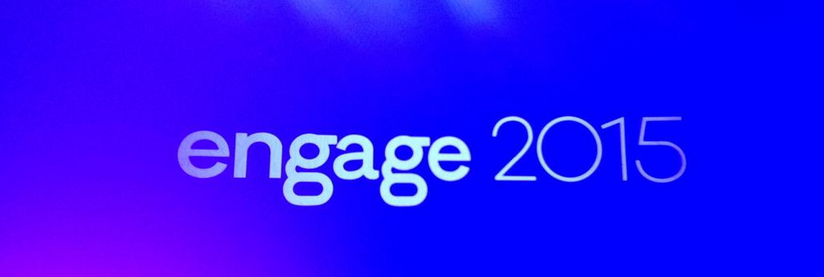Panel Discussion: Increasing Candidate Engagement in the Digital Age

Lori Schultz, former president of Yoh, served as moderator for the final “Engage Candidates” session of Engage 2015, “Increasing Candidate Engagement in the Digital Age.” On the panel were:
Lauren Jones – Director, Talent Acquisitions and Resource Strategy, Volt
Andrea Wagner – Vice President, National Accounts, Bullhorn
Joel Capperella – Former Vice President of Marketing, Yoh
Schultz opened the discussion by noting her 28 years in the staffing industry, and how things have changed. When once, recruiters built relationships through the telephone, the Internet has now become the industry’s dominant technological force in relationship-building, making things easier and better for recruiting companies. But, Schultz asked, has it improved the candidate experience?
- Capperella said that he’d experimentally applied to some jobs online in order to examine the process, and that it’s really not as efficient for the candidate as recruiters imagine. For years, the applicant tracking system has served the recruiting industry’s need for automation, but from 2008 to the present, the phrases “avoid ATS” and “beat ATS” have steadily increased in Google search popularity. If engaging more fully with candidates in the application process means applying some of the design principles of Tinder, then so be it. A little more heavy lifting could make the connection between companies and candidates much more rewarding.
Next, Schultz brought up the recruiting industry’s focus on metrics. What does this focus means to the candidate experience?
- In response, Jones encouraged the audience to keep it simple. She used candidate engagement as an example, noting that her dentist will text her, call her, and email her in order to communicate. Staffing firms have to set those expectations with candidates. Companies should be asking themselves what they’re doing to consistently engage with candidates: how many calls are being made? How many interactions are happening? How often? Even with simple questions and analysis, technology will enhance the process.
Schultz noted that technology has seen a great deal of mobile innovation in recent years. Is the staffing industry ready for significant mobile innovation?
- Capperella pointed out that there’s a lot to manage when it comes to mobile staffing: do your job postings render properly? What about your homepage? Your content? Many firms have also become comfortable with sourcing ahead of demand with generic job postings. But that type of strategy serves the recruiter, not the candidate. When it comes to mobile recruiting, how are you reaching out? It can’t just be a job alert. The job of the recruiter is to advance people’s career aspirations. What do people want to be? What are their skill sets?
- Wagner noted that the usual means of candidate discovery is still traditional, like job boards. But as we move forward, we’re going to see more of a Tinder/Uber-style of recruitment, especially when it comes to mobile technology. You could even get pinged with available jobs as you enter different geographical areas.
- Jones responded by saying that companies like Jobber and Switch are already offering a “swipe left, swipe right” form of job search for candidates who use mobile devices. Whether you move in that direction depends on how you want to position your brand. Are you customer-obsessed? Do you treat your candidates like customers? However, if you want your jobs to appear on Tinder-like applications, you’re going to have to pay to play. You must engage with the companies that offer this technology so that you can engage more efficiently with candidates.
Schultz then asked the panel about Glassdoor: how important is it for recruiting companies to focus on positioning themselves and their internal employee satisfaction ratings in order to maintain an excellent online reputation?
- Jones responded by acknowledging that while staffing firms may be great at bringing people in, they’re not necessarily uniformly good at continuing the cycle. Only 10% of firms have a redeployment strategy in order to get previously placed candidates engaged on the next assignment. She’s had a number of conversations with Glassdoor about putting postings on the site, because she’s obsessed with input. For example, she doesn’t buy anything on eBay unless the seller has had 1000 sells and at least a 96% satisfaction rating.
- Wagner added that it’s not just Glassdoor. Obviously, that forms a huge part of a company’s online reputation – if there’s a poor rating, you’re not working there. But like Art Papas said in the opening keynote of Engage, candidates behave in the same way that consumers behave, and they’ll try to find everything they can about your company on the Internet, on sites like Facebook, Instagram, and even Yelp.
- Jones agreed, saying that the staffing industry has avoided transparency for a long time. But it can’t be avoided any longer, and it has to be embraced, since staffing firms are a reflection of their customers.
- Glassdoor, according to Capperella, is well-funded and not going away anytime soon. Companies have to know how to leverage it properly, adding another layer to staffing’s unique and complex mix of marketing. It’s very possible to mismanage online marketing and come off poorly if your company doesn’t have a set strategy in place. It’s certainly something that your company should talk about, perhaps once a quarter. You should also attempt to understand what the typical experience is like for your contractors.
Next, Schultz asked the panel about where the social media platform falls into place when building talent communities.
- Jones informed the audience that only 3% of job seekers are really looking at Facebook for any type of job. Most forms of social media are more about branding, and consistency is key. You want to speak to an audience across a wide variety of networks, but you have to keep the message the same. Social media is a powerful engine to voice your brand and culture, and that’s what will attract talent.
- According to Wagner, you are what you share, both personally and professionally. Your social media presence defines you, your brand, and your company.
- Capperella said that social media can’t be something you won’t invest in. Of course you want your recruiters to place people, but your star recruiters are already reaching out on social media. You want recruiters to be writing and sourcing and engaging people on Twitter. Engagement on social media should be included as a part of recruiters’ work days.
- Jones brought up Recruitment Edge, a website that gives recruiters the chance to engage organically with IT candidates. She encouraged firms that have the opportunity to use Recruitment Edge to do so.
- Wagner mentioned Stack Exchange as another interesting way to recruit candidates. Companies are not as actively engaged with these websites as they could be. Recruiters need to be pushed in the right direction to use aggregators like this, because it’s certainly a bit daunting to begin using any new system. But if you develop skills with using sites of this type, it can be a real competitive advantage for your firm.
Moving on, Schultz noted that technology should make recruiting much easier. But there has to be a human side to even the most effective technology. As a strong advocate for a shared success environment, Schultz believes the industry has become a little complacent. Technology should be enhancing candidate engagement. How can companies get started in measuring the health of technology and candidate engagement in the digital age?
- According to Wagner, the world on the outside is moving faster than the world on the inside. While engagement can be slow, that’s just the nature of it – it takes a long time. Your firm has to make sure to explore its options. You have to get started.
- Jones said that it goes beyond likes and shares. Are you reading the comments you receive online? You have such a loud voice and such a large audience at your fingertips, so you have to be very diligent with what you do with your interaction information.
- Capperella added that if you can’t measure it, you can’t manage it. The ability to use metrics in order to determine where to direct your efforts is hugely valuable to recruiting firms. If you’re not driving your job board spend down, you’re going in the wrong direction. Your candidate database has to be growing valuably, and social media outreach can have big results. It’s not about automation or data, it’s about personal connection with talent communities.
- Wagner mentioned that Zappos no longer posts open positions on job boards, but only through social media like Facebook and Twitter. It was tremendously successful, and the transition hasn’t been very difficult.
- For Jones, whose entire job is based on looking through and navigating these tools, it’s about diversity. Two years ago, her company used four vendors, but now it uses twenty. Sometimes, less is more. Volt now has a better brand, a more consistent message, and a louder voice – saying the right thing to the right people.
An audience member then asked the panel if the one-on-one attention that some insist is crucial to recruiters is mostly marketing fluff and not actually valuable for staffing firms.
- Jones said that it comes down to honesty. Volt has a lot of technology that does automatic sourcing, so there’s inevitably a lot of traffic. You have to put the time in to cultivate people and coach them to have better uncomfortable conversations. You can still help candidates and leave them with a good taste in their mouths from interactions with your company, even if there’s not a good position.
- As Wagner said, after a first date, you want to know why there’s not a second date.
- Capperella added that the key is to provide something that’s valuable and connect it to a candidate’s career aspirations. Really good salespeople spend a long time nurturing relationships, but not nearly enough people that would give referrals for your company are actually asked to provide one. Sales nurturing has to increase because marketing and sales spend are merging together.




